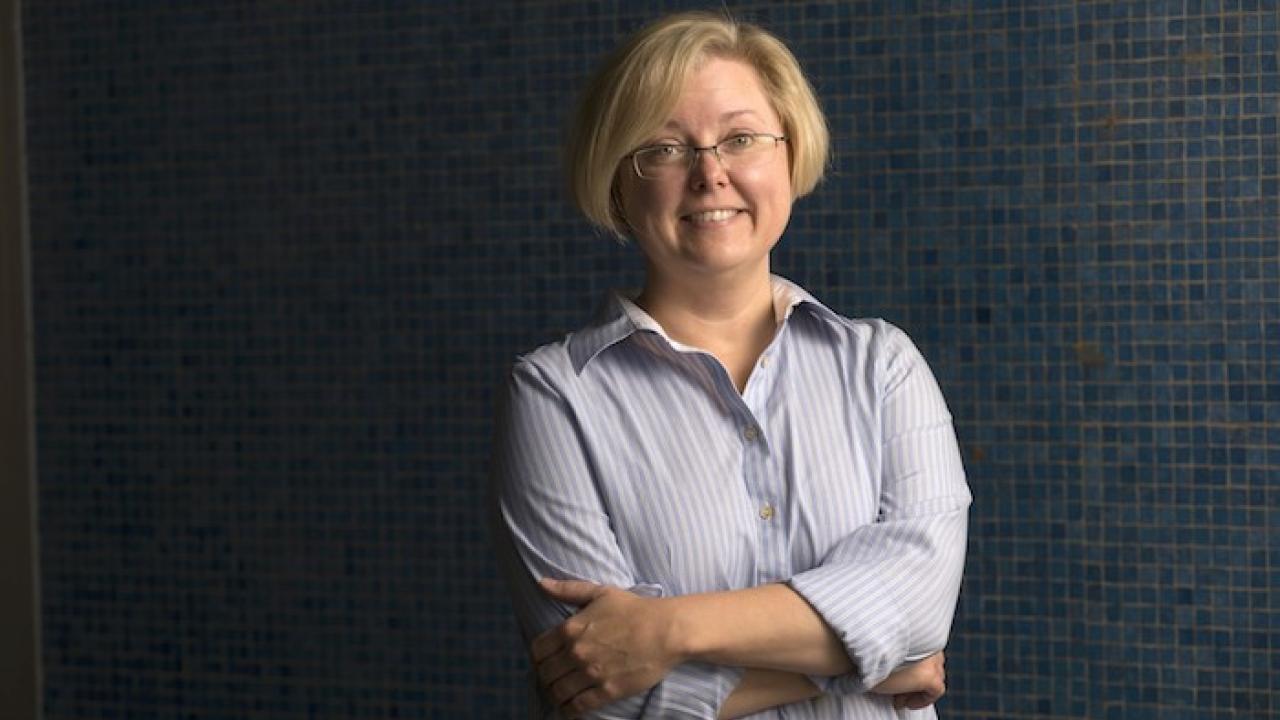
Cristina Davis’ Breath Test for COVID-19 Featured in the New York Times
Mechanical and aerospace engineering professor and chair Cristina Davis’ research was recently featured in the New York Times article, “A Covid Test as Easy as Breathing.” The article featured her lab’s groundbreaking work developing portable breathalyzer-like devices that rapidly diagnose COVID-19 and tell doctors how severe the case is going to be.
“The idea that exhaled breath could hold diagnostic potential has been around for some time,” Davis told the New York Times’ Emily Anthes. “There are reports in ancient Greek and also ancient Chinese medical training texts that reference a physician’s use of smell as a way to help guide their clinical practice.”
The goal of the project is to find COVID’s “breath signature” and develop devices that can read it quickly and accurately. To do this, they are looking at two aspects of breath to find this signature—condensate and vapor.
Condensate is a collection of millions of tiny aerosol droplets that are exhaled, condensed into a liquid. These aerosols, which help spread the virus, come from the airway and lungs and can also contain chemical and biological markers that can show how sick a person is. Vapor is the chemicals people exhale: nitrogen, carbon dioxide, oxygen and volatile organic compounds (VOCs), which give breath its smell. Dogs have been trained to detect diseases like diabetes from smell, so the idea that this could be done for COVID isn’t far-fetched.
“All of these inflammatory markers can show up in these metabolites and tell us a lot about your airway health and how you’re doing,” explained Mitch McCartney, the lab’s research director, adding that this is a way to detect the “cytokine storm” COVID causes that can lead to organ damage.
If successful, the team sees the devices both as inexpensive, non-invasive and rapid alternatives to polymerase chain reaction (PCR) and cotton swab tests, as well as a way for doctors to remotely monitor their patients’ condition when they’re at home.
“It would be a device you can breathe into at home that could do all of the chemical analysis of your breath, then upload that information to your doctor,” said McCartney. “This device might be able to alert your doctor if your inflammation levels are increasing so they can preemptively ask you to come into the hospital.”
Continuing to Lead
In nearly 20 years in the emerging field of breath research, the lab has used their devices to detect citrus disease, determine the air quality during wildfires and study the effects of e-cigarette smoking on airway health. When the pandemic hit, the team was working on a project to detect and diagnose cases of the flu with collaborators Nick Kenyon, Michael Schivo and Richard Harper at the UC Davis School of Medicine.
They quickly pivoted to COVID and have since received a total of $2 million from the National Institute of Health, the U.S. Department of Veteran Affairs and University of California’s CITRIS and the Banatao Institute. With the help of clinical research coordinators Maya Juarez and Tina Tham, the team has already been enrolling patients in clinical studies.
Though these devices are being developed in response to COVID-19, Davis and McCartney think they’ll become invaluable tools for medical practitioners and public health officials. McCartney thinks they could be used to rapidly test people entering an airport, concert venue or stadium, as well as an at-home way to monitor patients who are starting a new medication or recovering from disease or injury.
“This helps us prepare for the next pandemic,” he said. “Once these tools are created, we could quickly change them in the future like we did for COVID with the PCR test.”
